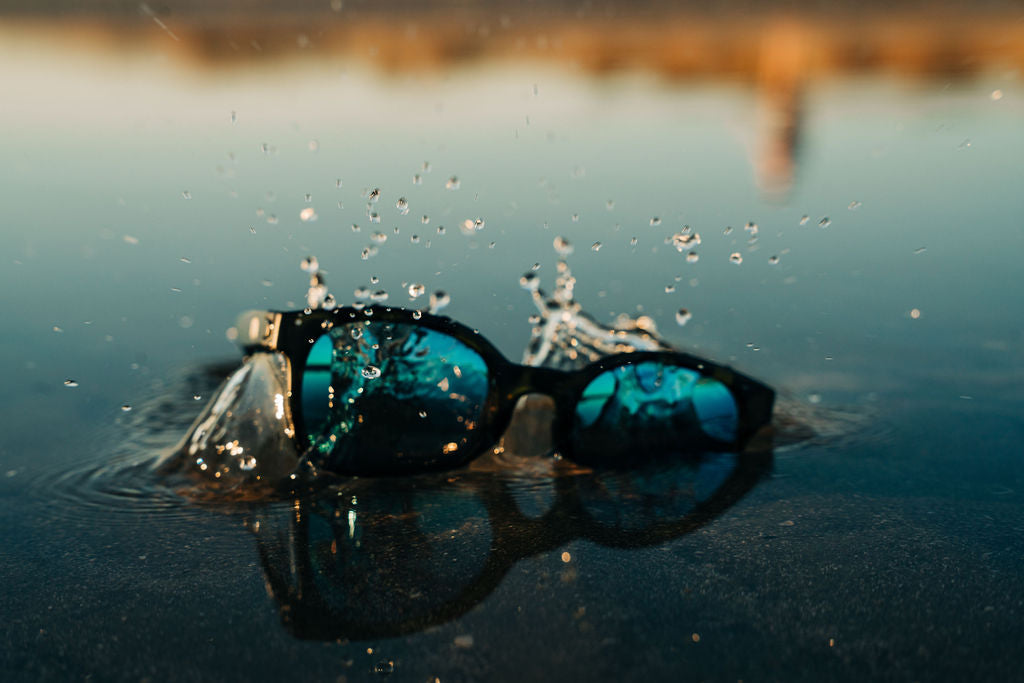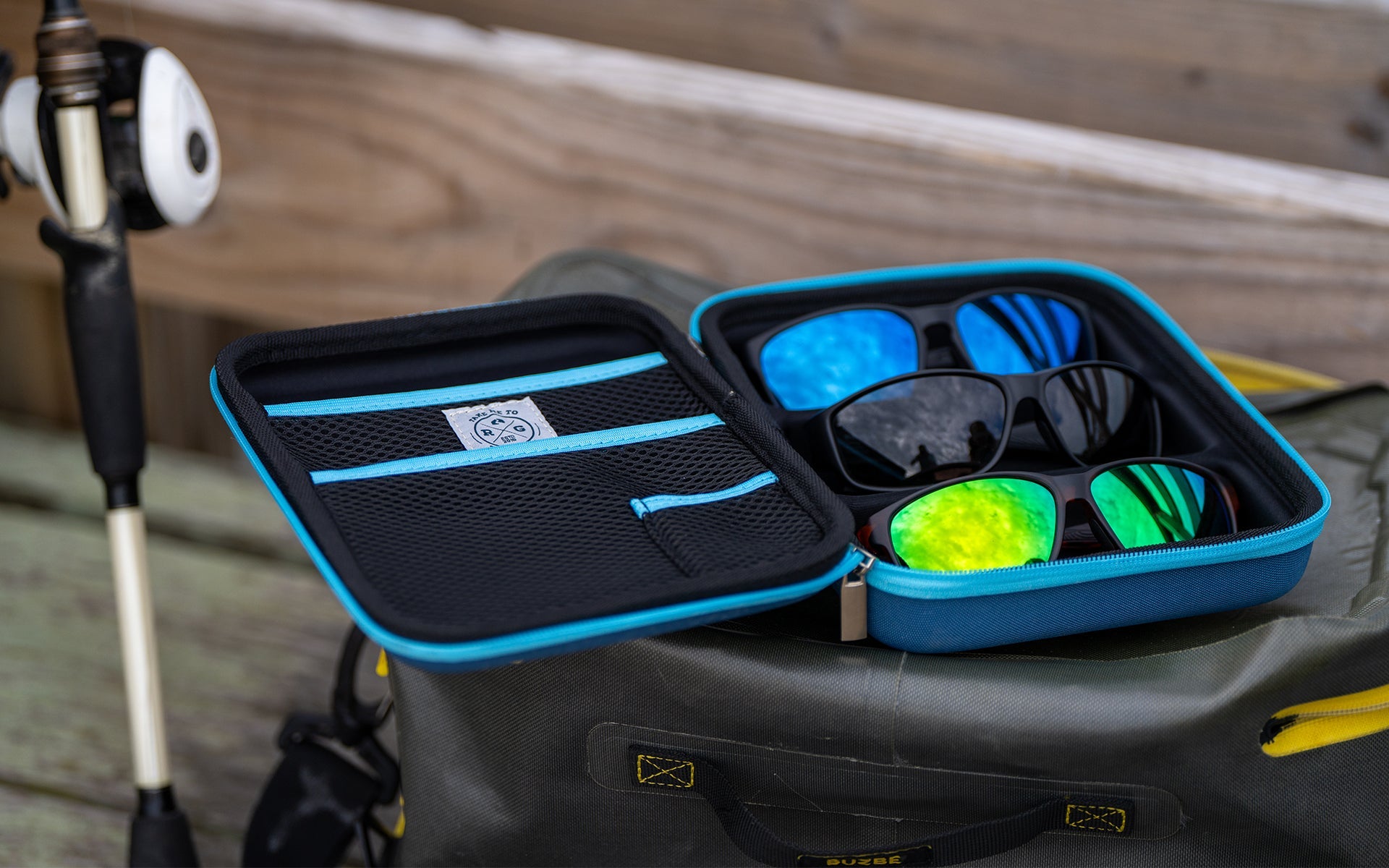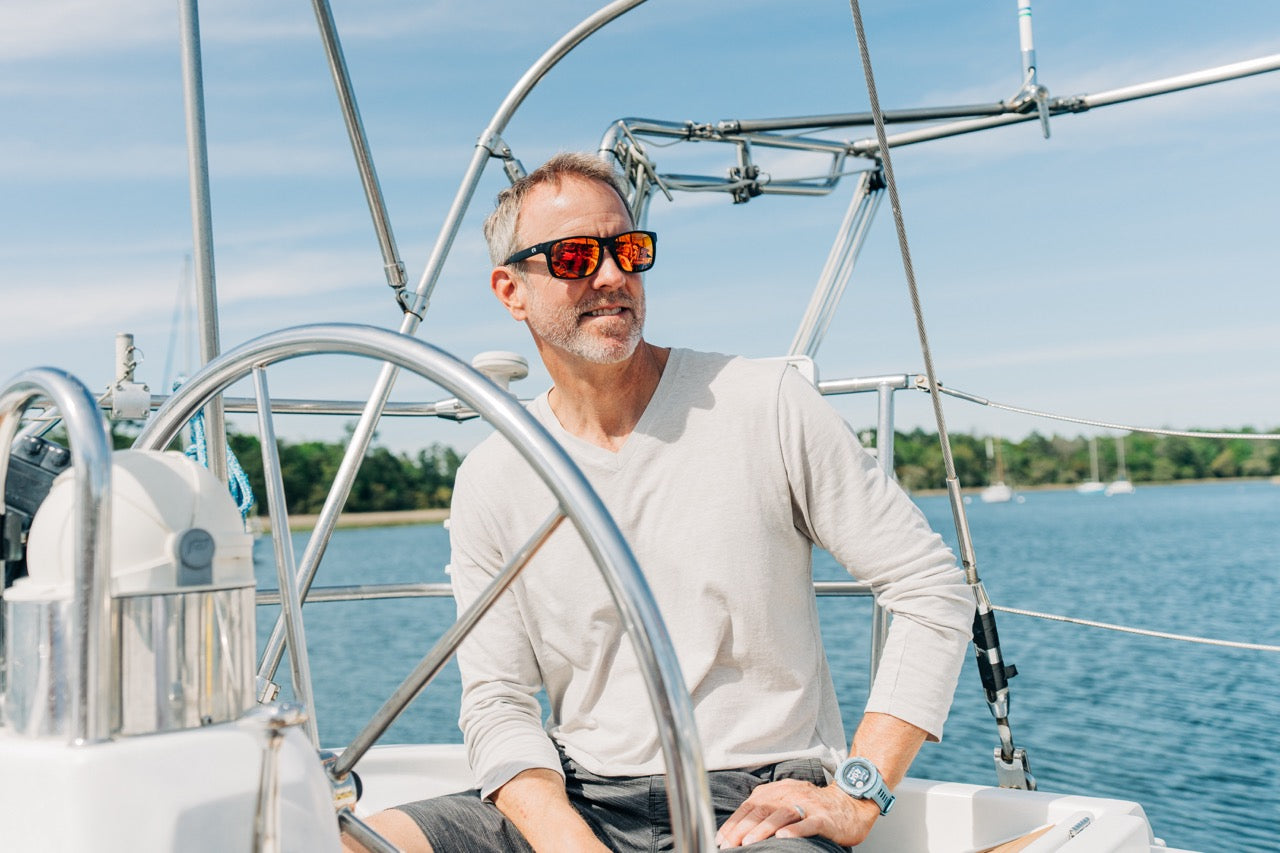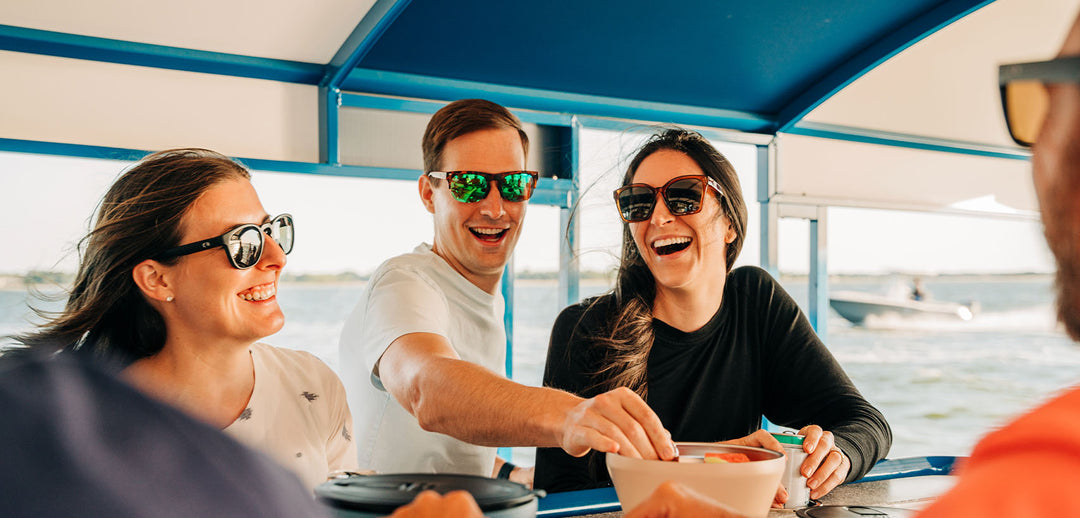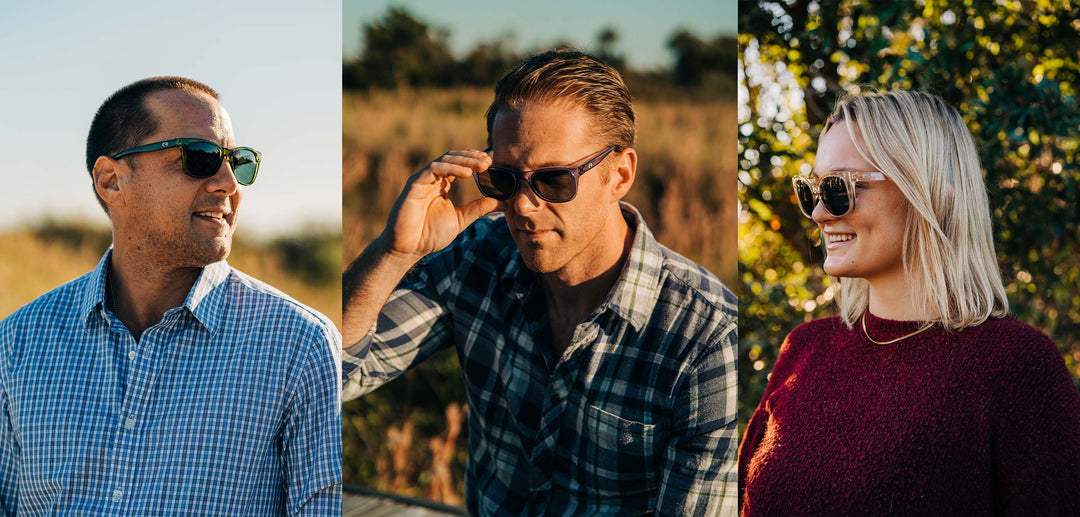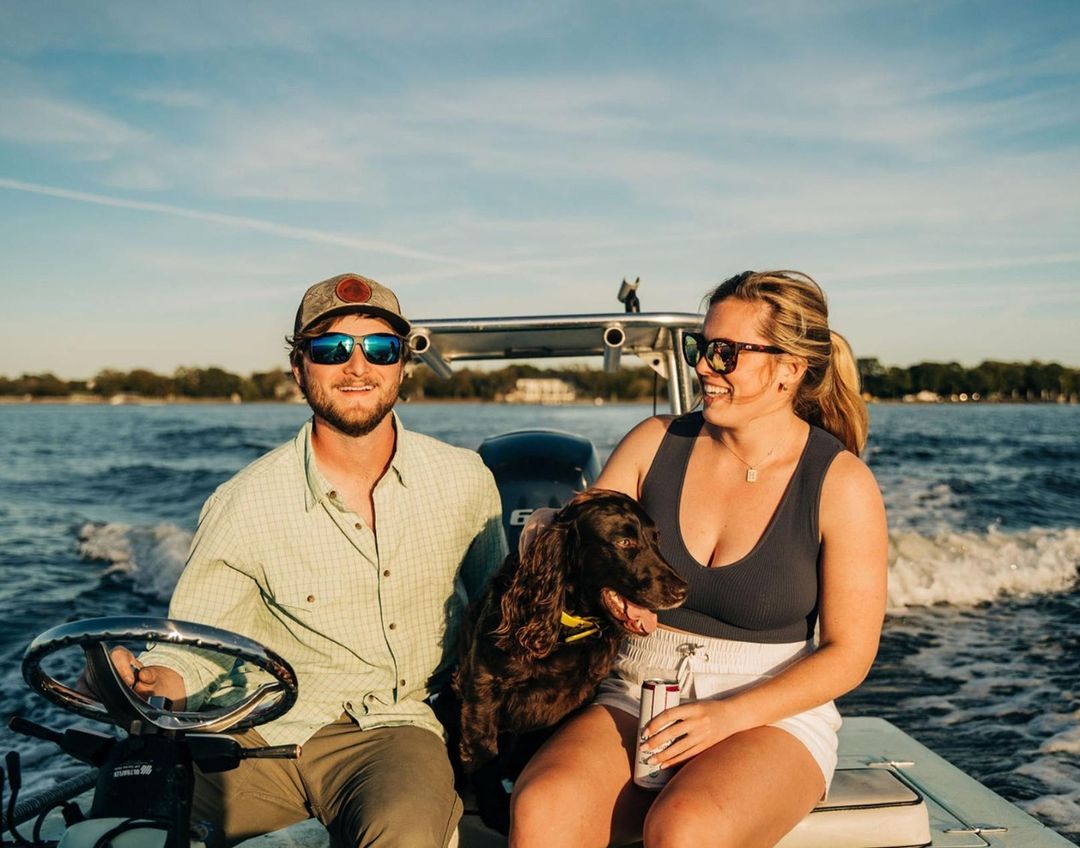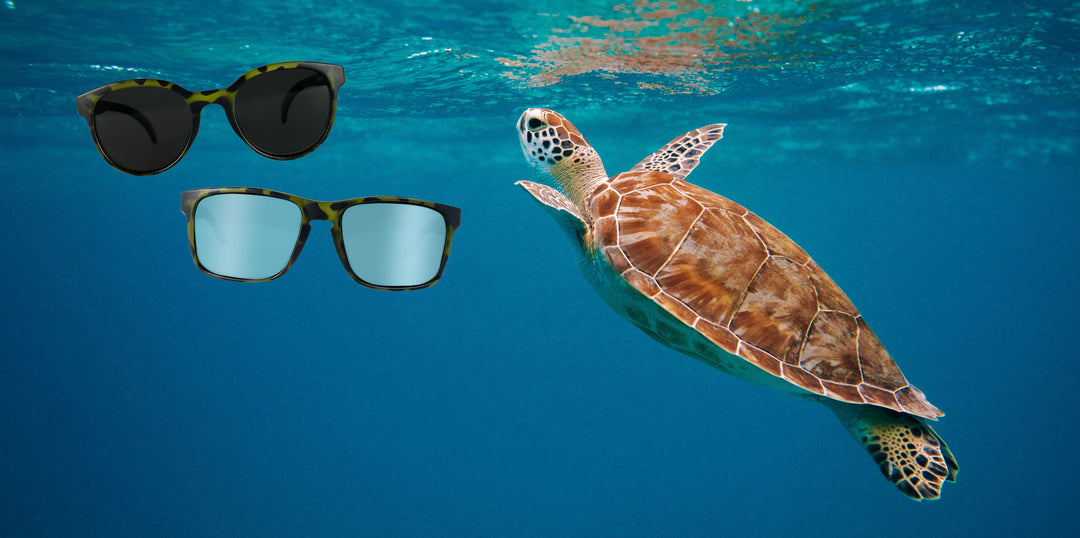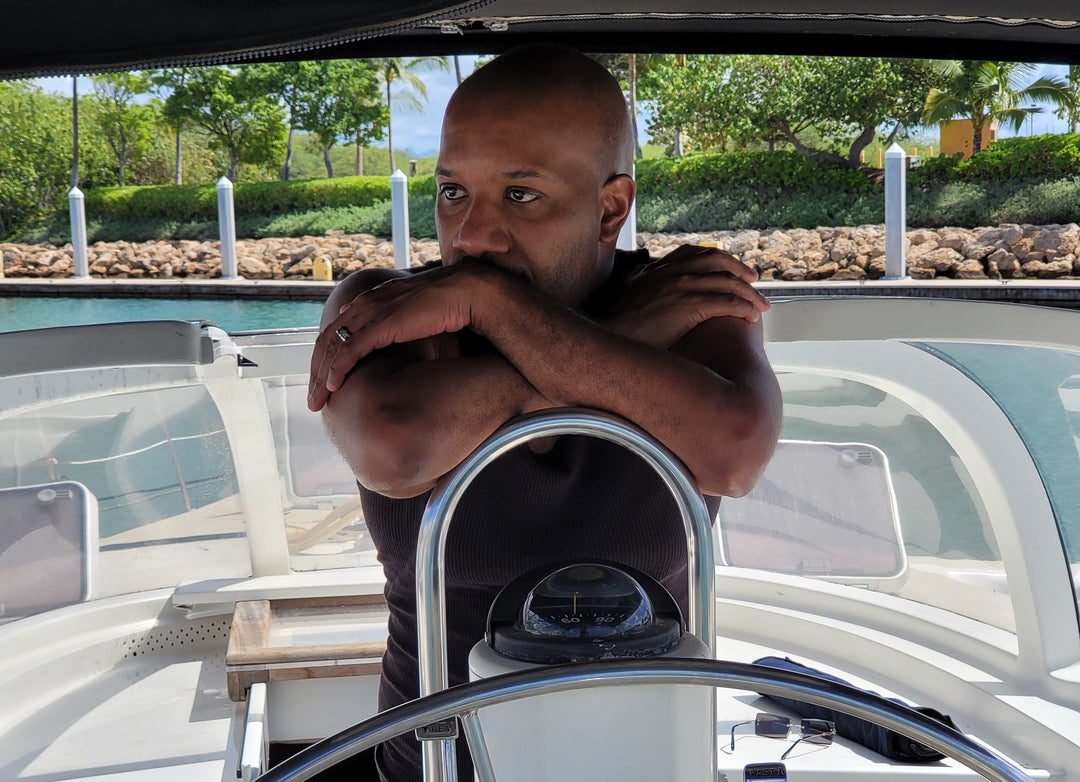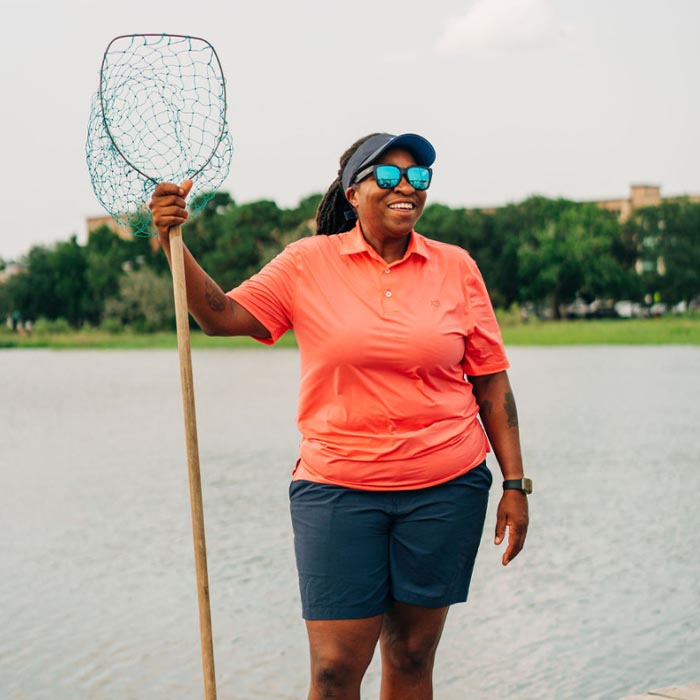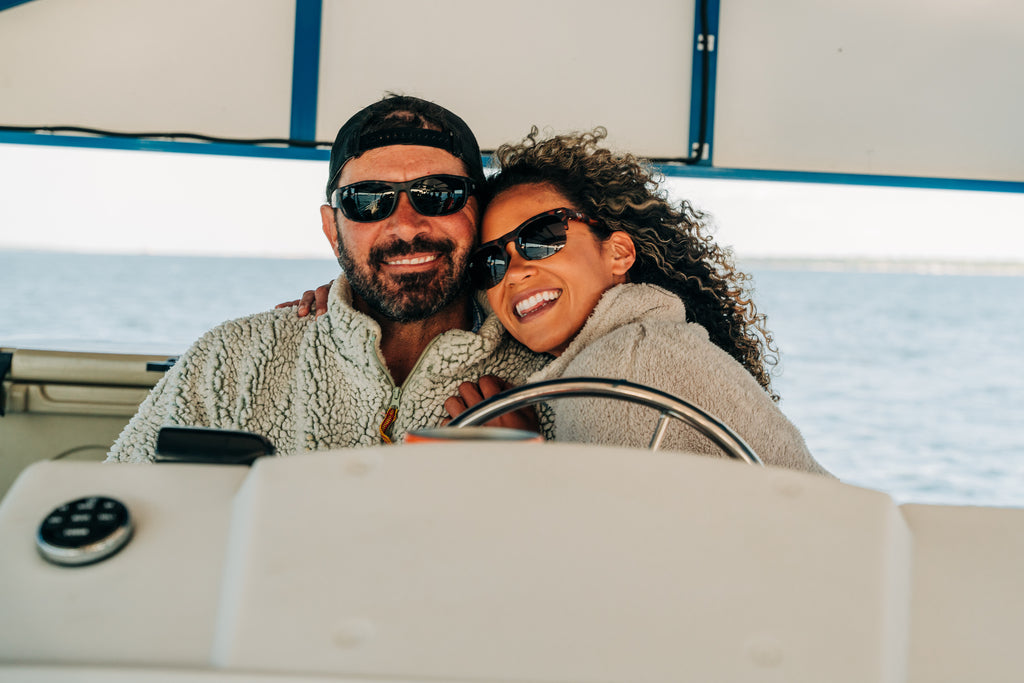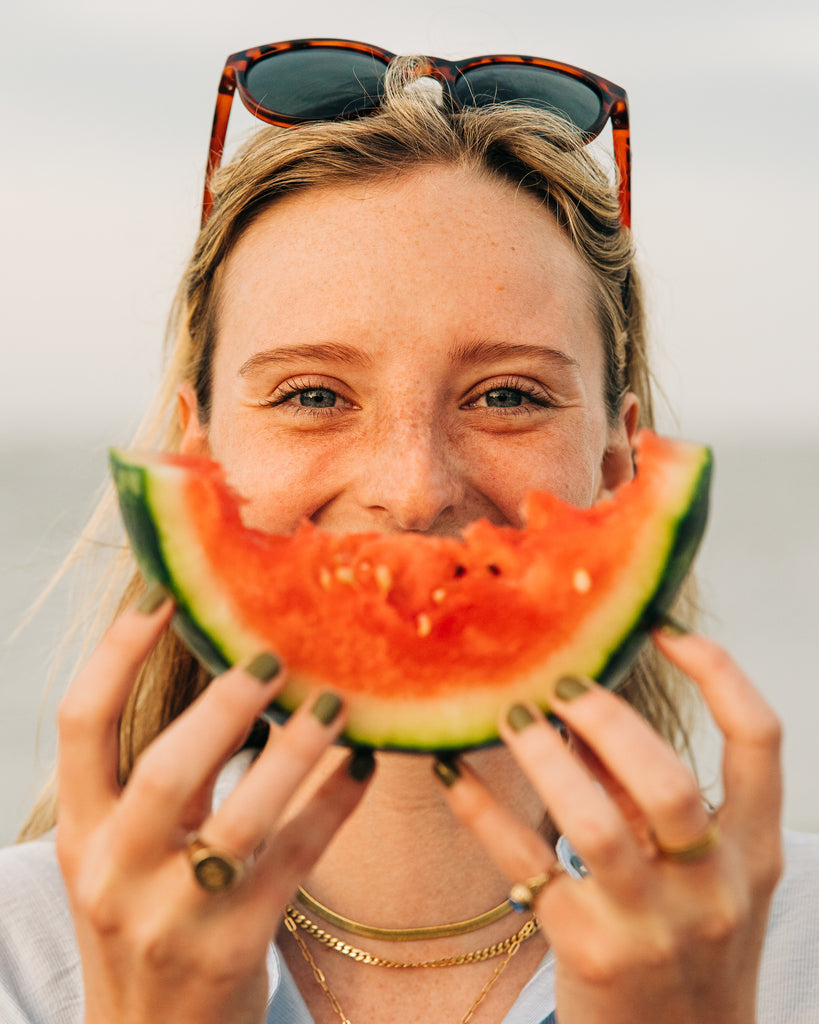Sapelo Island Beaches
Along the Georgia coastline, in between Savannah and St. Simons Island, is the barrier island Sapelo. Sapelo Island beaches are full of natural beauty and adventure, yet because Sapelo is undeveloped, visiting can be difficult. Learn more about the island and how to visit from Elaine Elliot.
The largest organism in sight was a dead oak tree, buried half way in the soft white sand between the dunes and ocean. Its roots jutted into the air, and the remaining limbs twisted to and fro, making for perfect seats on an otherwise empty stretch of beach. The waters of the Atlantic were calm during low tide, but this tree was a sure sign that at one point the waves reached the maritime forest and attempted to viciously take a victim back to sea. I was infatuated with the melancholy beauty of this single tree. The fallen giant looked like a nautical ichiban floral arrangement with its leafless branches.
While perched on its trunk, I scribbled more observations into my field notebook, as I mindlessly kicked up sand with my bare feet and rubbed away forehead sweat. I looked up at the light blue sky dappled with puffy clouds, wishing for cooler weather. One of the professors was picking up a brown sludge along the shore with his hand and telling the students that it was shrimp excrement mixed with mica. The sparkling mixture of sea manure covered the beach in a smooth ripple pattern. Tiny holes were punctured in the sand all over the beach too, evidence to the shrimp and bristle worms that create air pockets to filter feed during high tide.
There was so much to see, and so much to learn. Cabretta Beach looked nothing like your average seaside destination. Dead trees would have been cleared for pool chairs. Shrimp excreta would be viewed as a burden to tourist health and pleasure. Hatched sea turtle eggs would be misinterpreted as washed up ping-pong balls. And there would have been a lifeguard watching the waves for $15 an hour. But here on Sapelo Island, everything was frozen in time. The only thing that consistently moves is the tide.  Along the Georgia coastline, in between Savannah and St Simons Island, is the barrier island Sapelo. At nine miles long, it is the 4th largest barrier island in the state. Marshlands, pristine beaches, and maritime forests remain in abundance due to land protection by the Georgia Department of Natural Resources, University of Georgia research facility, and Hog Hammock cultural site. The 434-acre Hog Hammock community is also home to the last surviving saltwater Greechee population in Georgia. Their Creole culture dates back to the Civil War, when they were freed from enslavement and chose to remain on the island as one of the most sustainable, isolated, and unique communities in North America.
Along the Georgia coastline, in between Savannah and St Simons Island, is the barrier island Sapelo. At nine miles long, it is the 4th largest barrier island in the state. Marshlands, pristine beaches, and maritime forests remain in abundance due to land protection by the Georgia Department of Natural Resources, University of Georgia research facility, and Hog Hammock cultural site. The 434-acre Hog Hammock community is also home to the last surviving saltwater Greechee population in Georgia. Their Creole culture dates back to the Civil War, when they were freed from enslavement and chose to remain on the island as one of the most sustainable, isolated, and unique communities in North America.
On the brink of the ocean, Sapelo itself remains sustainable, isolated, and unique as an ecosystem. This is why many students come to the island yearlong to study and research the land. I was fortunate enough to spend a week on Sapelo as a University of Georgia IFP student in 2012, and then a TA for the program in 2014. IFP uses Sapelo Island as a sort of “boot camp” before traveling out West for further field study. The week of jam-packed knowledge and summer humidity was a test to both my mental and physical abilities. Did I survive? Barely. Did I acquire a profound admiration for this island? Definitely.
Over half of the United States’ salt marshes are located along the Georgia coastline. The region has prime tidal lengths for marsh productivity. The south end of the island is covered in marshlands that look like endless lime green meadows. Spartina, the only successful freshwater plant in intertidal zones, covers the marshes in this unforgettable hue. The plant grows in salt marshes globally due to no competition from any other plant species. The thick mud is relentless, and after studying the marsh for a few hours one morning, I was covered knee-deep in silt sludge. Every step required concentration to avoid sinkholes or heaps of Fiddler Crabs. The crabs were easy to catch, due to their masses, which allowed for close-up inspection. Each male crab has one claw significantly larger than the other for mate attraction. Just like the Spartina, these crabs held claim to the salt marsh and its rich nutrients. 
Not all of Sapelo’s wildlife is visible to the eye. Underneath Doboy Sound there’s an eclectic assortment of aquatic life from stingrays, blue crab, flounder, jellyfish, pompanos, squid, snapper, baby sharks, sea bass, puffer fish, shrimp, alligator, and sea turtles. And at night during the summer season, the sea turtles use Sapelo’s sandy beaches as a nesting ground for their eggs. After dark a group of us trekked to the beach using our red light headlamps as the only light sources (white lights on the beach are not allowed during nesting season since they will confuse sea turtles), in hopes to find a turtle scuffling up the beach. Our luck was diminished, but we did enjoy scrapping the sand to surface up the bioluminescent organisms that glow under the moonlight – a near perfect way to end a day at the beach.
Since Sapelo is undeveloped, visiting can be difficult. A single ferry takes visitors to and from the island on a timely schedule. Over night stays are limited on the island. Large groups can stay at the historic Reynolds Mansion, while others choose to either day trip, or stay at some of the B&B’s near the Hog Hammock community. Whether you’re staying for the day or overnight, Sapelo is worth the trek and dedication. This island remains a whimsical and nearly untouched place that is guaranteed to satisfy any adventurer. While swimming and kayaking on Sapelo’s remote beaches, remain carefree with a pair of Rheos floating sunglasses – some of which are named in honor of Sapelo. Be sure to also check out Sapelo’s other attractions such as the Chocolate Plantation, Hog Hammock community, Sapelo Island lighthouse, Raccoon Bluff, and Nanny Goat Beach.
Written by: Elaine Elliott (IG: @elainelliott)
